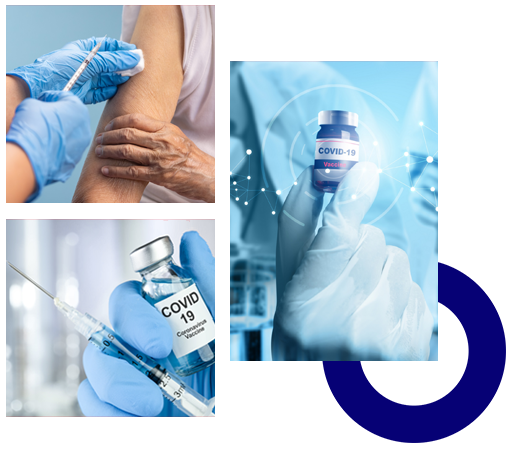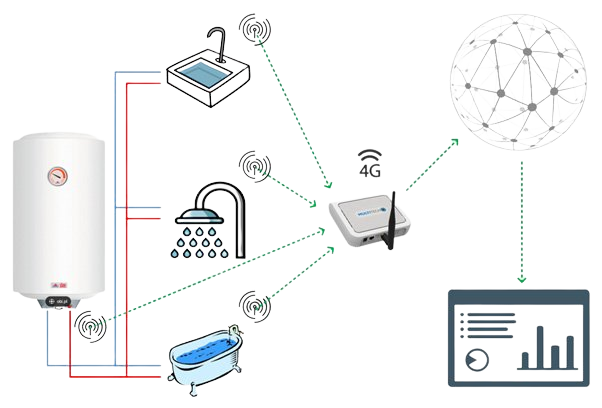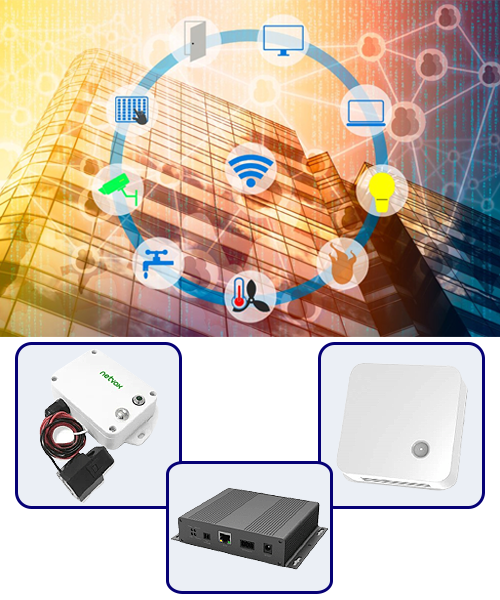Smart Building Technology Solutions
Smart Building Technology can be applied across multiple industries and sectors, providing benefit in understanding an organisation's performance and efficiency of their building's infrastructure and workforce. Whether you are in the hospitality & accommodations, social housing, healthcare, education, or Facilities Management industry, Smart Building Technology has something to assist your business in making better decisions. Our customer centric, data driven approach, ensures all areas of a building's environment are optimised to directly benefit the occupants health, comfort and happiness. Providing better places to work & live
HealthCare Sector
Smart technology within healthcare has been progressing gradually over the past few years, powerful devices like smart insulin pens, connected inhalers, asthma monitors and more being put in the hands of everyday users, enabling them to better manage and address their own health needs – as well as to quickly access help if something goes wrong. Wearable devices like biosensors and smart watches can also allow healthcare specialists to remotely monitor ongoing conditions and gather data quickly and efficiently, allowing examinations and treatments that were previously only possible in a hospital setting to take place anywhere, like within the patient's home.

Why Smart Technology is Ideal for Healthcare
Healthcare remote monitoring sensors represent one of the fastest-growing sectors of the IoT market. In fact, the value of this sector, sometimes called the Internet of Medical Things (IoMT) is predicted to exceed £154 billion by 2026.
To realise what IoMT means for IoT as a whole, and how healthcare IoT devices need to be monitored and managed, you must understand all the ways in which IoT devices can be used for healthcare. The most common example of IoT in healthcare is remote patient monitoring, meaning IoT devices that collect patient data, such as heart rate and body temperature, many other examples of IoT in the healthcare industry can be found.

Glucose
monitoring
Continuous glucose monitors (CGM) measure the body’s glucose levels in real-time by detecting the glucose present in tissue fluid (also called interstitial fluid).
Glucose is another word for sugar. While a blood glucose meter (BGM) provides a measurement of the blood glucose level at a specific moment in time (when you prick your finger), CGMs typically provide a new glucose level every five minutes, meaning 288 times per day data is recorded.
Remote patient monitoring
Remote patient monitoring or telemonitoring aims at improving patient care through digitally transmitted health-related data and enables the streamlined collection of patient data beyond the traditional healthcare setting.
It allows early detection of disease decompensation and intervention, patient education and improves patient-physician relationship.
Heart rate monitoring
Like glucose, monitoring heart rates can be difficult, even for patients who attend healthcare facilities. Periodic heart rate checks don’t guard against rapid fluctuations in heart rates, and conventional devices for continuous cardiac monitoring used in hospitals require patients to be attached to wired machines constantly, impairing their mobility. Remote monitoring of heart rates is a game changer, IoT can boost efficiency for healthcare professionals.
Hand hygiene monitoring
With the threat of COVID still not subsiding, hand hygiene is becoming a vital part of minimisng the spread of infectious viruses. Water temperature monitoring sensors normally used upon sentinel end points for Legionella monitoring can be doubled up for hand wash hygiene. Each time the taps are used the sensor picks up usage and sends data to be recorded upon our customer data hub. You can now be safe in the knowledge your staff are washing their hands before they interact with their clients.

Depression & mood monitoring
Traditionally very hard information for healthcare professionals to collect and collate, depression and changes in mood can now be monitored via Smart phones or watches.
The constent monitoring of heart rate and blood pressure is being used to determine these metrics as viable ways to assess peoples moods or state of depression. Over time, this data will become more uselful as more people use this type of service.

Connected
inhalers
Alongside monitoring the frequency of attacks, connected inhalers monitor the air quality around them to understand and learn the conditions that may have brought on an attack.
Connected inhalers will also alert users when they have left their inhaler at home, increasing their risk of suffering attacks.

Connected contact lenses
Digital contact lenses are a very new addition to the IoT industry. Whether or not they end up providing a direct health benefit to users is still to be confirmed.
There is no doubt however that the ability for users to record images via micro cameras within the connected contact lenses is something that can only boost digital interactions between users in the future.

Robotics surgery
The use of IoT devices within surgery is already a reality. These devices are incredibly small and the healing time and size of incisions have been reduced for many types of surgery.
Keyhole devices are commonly used for knee and heart surgery and have been found to be highly beneficial in the process.
Benefits of Smart Technology in Healthcare Projects
Reduce Customer Complaints
The biggest KPI (Key Performance Indicator) in customer satisfaction is the number of customer complaints. High volumes of customer complaints is not only crippling to the daily running of a service such as a housing association but the damage to reputation of poor customer service and high complaint volumes cannot be underestimated.
With this KPI being so important, extra cost, time, resources, and staff is often spent on dealing with customer complaints rather than that money being invested back into the schemes to make real world improvements in an attempt to reduce the number of complaints in a positive way.
Boost Staff Health and Happiness
A well balanced building environment that is clearly important to the service provider gives a solid platform for people to perform at their best. If your workplace looks after you from the building environment upwards, you are far more likely to be happy at work, not take time off, and actually go the extra mile for them as you know they do for you. Happy staff will work harder and do more for the customers, providing a much better customer experience.
Improve Building Environment Health
The more data available from as many different types of sensors relevant to the building will only make a positive difference to the building environment health. By monitoring and maintaining comfortable levels of ambient temperature and humidity, by ensuring IAQ is high, and the building has good ventilation, you are making a happier and healthier environment for all building occupants. Staff will be more efficient, and customers will be more tolerant simply because of the conditions of the direct environment the building provides.
Increase Customer Satisfaction
By improving any of the other areas of building environment management, it will only ever end in improved customer satisfaction. Customer and end users of services don’t want much. They simply want the service advertised to do what it says it will do. This is the same for any user of any service, the absolute basic requirement is that the service does what it says. Giving end users a better place to be, with more comfortable climates, happier staff and more staff resources available to the end users when they are required are guarantees that the service will be as good as it can be.
Increase Service Uptake
By creating a better environment and healthier building with the implementation of a smart building system, customers will see everyday the improvement in building management, making their lives happier and easier to manage. Less downtime to services, better allocation of resources, happier staff, and a general sense of a good place to live will increase the uptake of new services offered by the housing associations. This in turn increases the budgets available to improve the customer’s experience.
Free up on-site Resources
Simply by reducing site visits alone from 12 monthly to 1 annual, the on-site resources required to administrate the site visits, the coordination on site to meet contractors and chaperone where required is reduced by 91.6% This benefit is carried over into the percentage of money saved, simply by no longer carrying out these tasks each month.
Remove contractor site visits
Having 1 system that can acquire all data needed to assist in building management and optimization means all current contractor sites visits are removed as they are no longer required. 1 annual site visit for system maintenance. No more missed site visits, no more admin to rearrange contractors and no more missed readings for all on site systems being monitored.
Enables Preventive Maintenance & Planned Management
Having access to data 24/7 enables data analysis to show trends and map performance of key assets. This knowledge allows a preventive maintenance plan to be adopted. Instead of changing components at set timed intervals or when there is a full break down, using data you can see when the performance starts to drop off and therefore when new components are required. Over time this picture can be developed to show the expected life of components within the key assets on site.
The world has changed!
The world has changed! This is not an opinion; it is a fact. Since Early 2020 when COVID-19 first hit the world, so many things have changed. Although we are now in a time of recovery and the restrictions on our lives do seem to have been lifted, many people are still working from home or ‘remotely’ as it is often referred to, many people are not going out as much as they did, many buildings have reduced staff numbers and many disruptions still occur in the aftermath.
- COVID-19 – Unfortunately, COVID-19 is still a big problem effecting so many aspects of life. The disruption of staff being off from work and the knock on effect of isolating is causing huge stress on the infrastructures in place across many industries.
- Access to sites and assets – With many organisations reducing staff numbers, accessing sites and assets within sites is becoming more difficult.
- Missed site visits – With many staff having to take unexpected time off from work, many planned visits for scheduled manual monitoring programs are not being carried out on time
- Missed critical readings being recorded – Many assets, especially those hard to reach are being missed from visits as there is no access available or no one to chaperon visiting engineers during planned site visits.

Remote IoT Sensors vs BMS
Remote IoT Sensors
This technology has opened the world of remote monitoring to everyone and everything. All sensors are designed to be retro fitted to assets, enabling them to be monitored in the same way a BMS systems does within more complex buildings and sites. With a fully modular approach, Remote IoT Sensors allows users to monitor their highest needing assets first and build their network up over time. Begin your journey with Legionella Watch and Remote Temperature Monitoring, simply keep adding new sensor types to expand your network, end your journey with an easy to manage, more compliant and Smart building.
BMS
Stands for Building Management Services or Systems. An approach used in large and complex buildings with a full complement of building services such as HVAC, Chilled and Hot Water and Heating, Lifts or elevators, Fire Alarms, Refrigeration, and Security Systems. All of these will be connected via a LAN (Local Area Network) to a Head End Terminal to be monitored by on site facilities staff. BMS systems are installed during a buildings construction and are very expensive to implement. They are normally focused on plant equipment with the further reaches of the system left unmonitored. The cost to extend a BMS to include these elements is often prohibitive, as the installation and commissioning of hard wired sensors after construction is completed can cause huge disruption.
Remote IoT sensors can be used to enhance existing BMS systems at a fraction of the cost. All sensors are plug and play and can be added to the network as and when they are required or desired. Grow your building environment data and see your building management optimisation in a new and smarter way!
Remote IoT Sensors vs BMS
Monitoring System
BMS
- Reduce Maintenance and repair costs.
- Provides a better working environment.
- Environment Friendly.
- Remote access means little or no down time.
- Security Risks
- Data Collection is difficult
- It is very expensive
- Installed during a building’s construction
Remote iot sensors
- Reduce Maintenance and repair costs.
- Provides a better working environment.
- Environment Friendly.
- Remote access means little or no down time.
- Data Collection is easy
- It is not expensive.
- Designed to be retro fitted.
- Makes tasks easier.
- Security Risks
What is Remote Monitoring?
Remote Monitoring is a general term for any remote sensor monitoring any type of asset. Normally battery powered and with wireless data transmissions, remote sensors are changing the world we live in. Sensors send data to IoT Network gateways which then transmit it to hosted data servers connected to browser based software applications displaying the data on user dashboards. The ability to visualise data for so many aspects of building management give huge control to the building managers. Precise decisions can be made, efficiency can be boosted, preventive maintenance can be adopted, and resources and finances can be saved.


What is SMART Technology?
First, what does SMART mean? SMART stands for SELF-MONITORING, ANALYSIS and REPORTING TECHNOLOGY. It is a technology that uses artificial intelligence, machine learning, and big data analysis to provide cognitive awareness to objects that were in the past considered inanimate.
There are 3 main types of Smart Technology.
Internet of Things (IoT) - Describes the network of physical objects “things” that are embedded with sensors, chips, software, online connectivity, analytics, and applications to bring fixed physical objects to life. These devices create significant value, they are innovative, scalable, and automated.
Smart Connected Devices – Usually connected to the internet or Bluetooth and controlled remotely, smart connected devices can offer a tailored user experience but must be physically managed given that they don’t adapt to the extent IoT devices do. Smart Phones or Smart Bulbs are an example of Smart Connected Devices.
Smart Devices
- With reduced automation, no internet connection required, and of a programmable nature, smart devices, for instance, smart washing machines, provide specific personalized services at a particular time.
The whole process from installation to the updated weekly report has been fantastic.
Its purpose was to demonstrate how a newly installed system was operating for a 3-month period, so we could iron out any issues, or flag up any areas of concern before full hand over to the client. The real time data allowed us to make several minor adjustments and changes to achieve satisfactory temperatures throughout the property that would not normally be picked up.
Many Thanks for all your efforts, we shall definitely utilise this system on projects going forward
